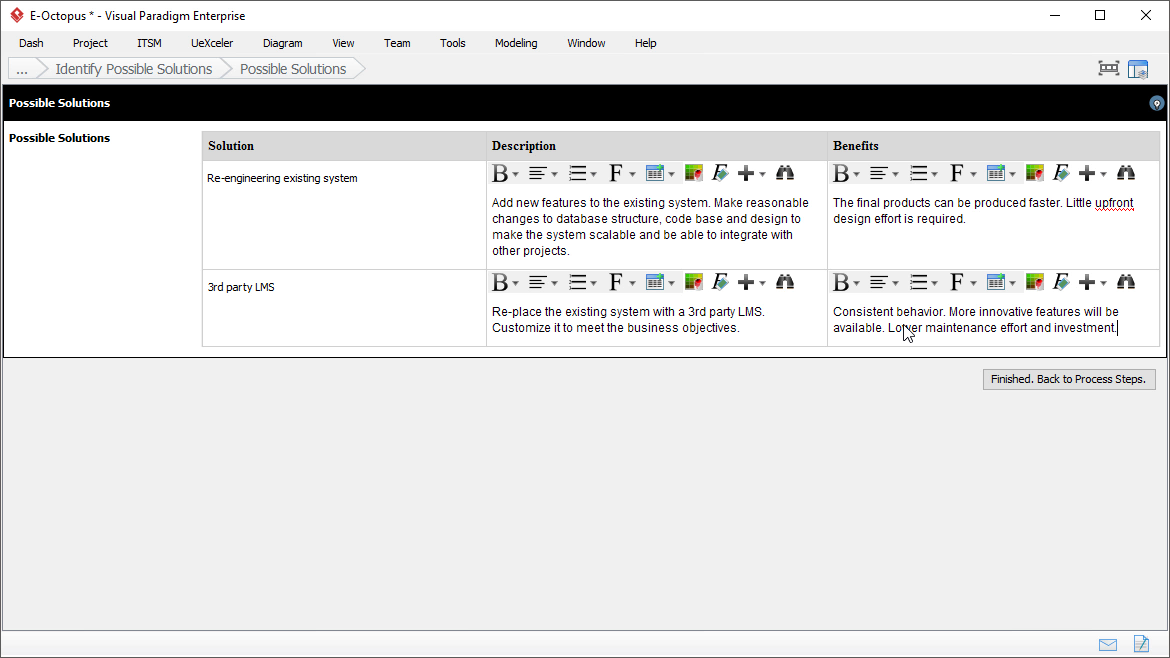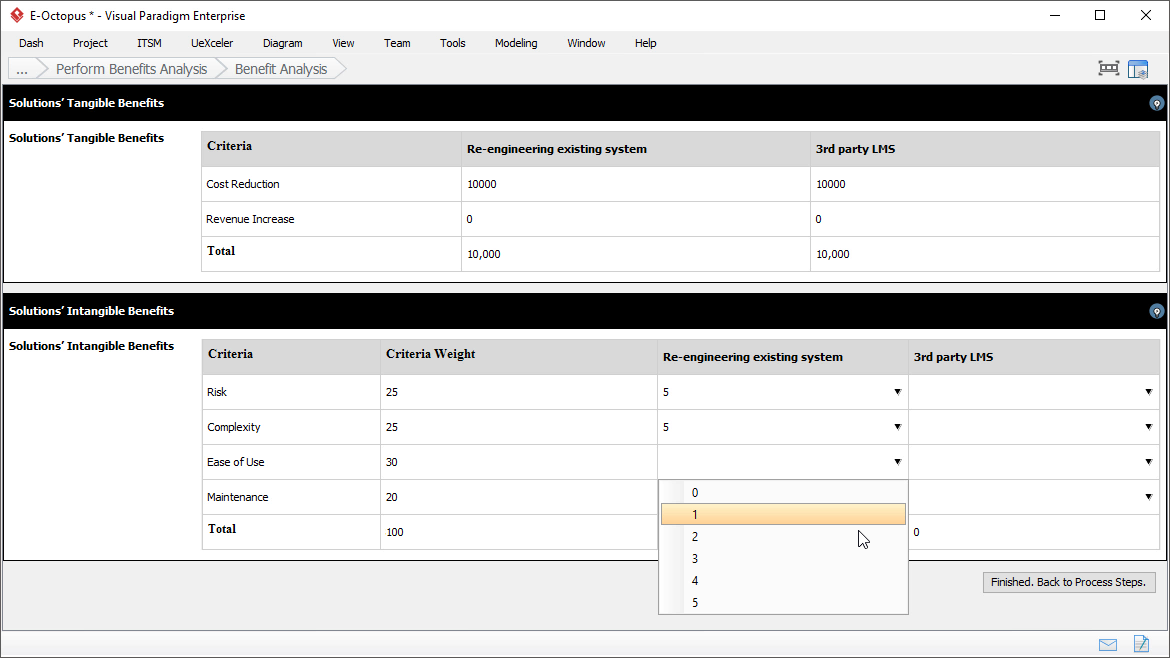Cost Benefit Analysis is one of the project management deliverable you can create with our project management lifecycle software.
Cost Benefit Analysis is the estimation of the total costs and possible profits to be derived from a project, through the adoption of different solutions.
This article shows you how to perform a Cost Benefit Analysis.
Activity 1: Identify Possible Solutions
Based on the project description, statement of business need and business objective(s), identify a range of solutions that can be considered to address the identified need. Evaluate each possible solution and summarize the strengths of each.

Activity 2: Perform Cost Analysis
Evaluate solutions’ one-time costs
Identify the one-time capital and operating costs of the possible solutions. The following are some of the cost categories suggested. Feel free to add or remove any categories:
- Internal Staff Labor
- Services
- Software Tools
- Hardware
- Materials and Supplies
- Facilities
- Telecommunications
- Training
- Contingency (Risk)
Evaluate solutions’ on-going/annual costs
Identify the on-going and annual cost of each of the possible solution. The cost categories are pre-populated based on the previous step.

Activity 3: Perform Benefits Analysis
Perform benefit analysis on possible solutions
Identify the benefits of adopting each solution.
Tangible benefits are benefits that can be measured and quantified. Typically it refers to a reduction in cost and an increase in potential revenue. Intangible benefits are non-quantifiable improvements like risk, ease of use, brand equity, etc.

Activity 4: Select and Justify Solution
Select a solution with justification
Based on the cost and benefits analysis, recommend a solution. State why the preferred option was chosen by summarizing its benefits and costs, and explaining why the benefits outweigh the costs involved.